Visibility is nearly zero and you can hardly see your hand as snow storms horizontally in the afternoon tea time in the Antarctica. Moments later the weather clears and work continues. 300 Koreans are finishing up their research station, Jang Bogo in a hurry. Five technicians with Windside micro wind turbines are patiently waiting for a crane and assemblers to arrive. The wait does not bother Risto Joutsiniemi, the founder of Windside Production, because there is plenty of intriguing things to see both outside in the raw scenery as well as indoors of the research station.
In January 2014 a group of technicians and Risto Joutsiniemi departed on a journey only few people have experienced. Their destination was the Antarctica, Jang Bogo -research station, which was meant to be set up in March 2014.
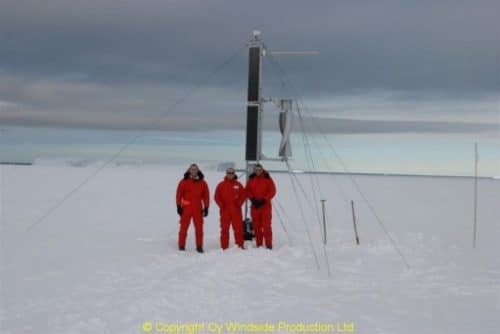
The voyage to the South Pole took four flights and a cruise on the icebreaker ARAON over 14 days. The icebreaker is owned by Korean Polar Research Institute (KOPRI). Risto recalls the sea journey with amusement. It was an unusual and peculiar experience for a landlubber. The ship left from New Zealand to the Antarctica. The beginning of the journey was rather peaceful and escorted by impressive flight of albatrosses. As the ship made headway in the Pacific swaying in all directions, Risto was not seen on deck for a while. The cuisine of the ship’s galley was an interesting experience to the traditional Nordic engineer who was used to the Finnish non-spicy food. On the Korean ship, he found that the least spicy thing on the table was kimchi.
Finally, after a few days and several icebergs -some of them kilometers wide-, the icebreaker arrived in Jang Bogo research station.
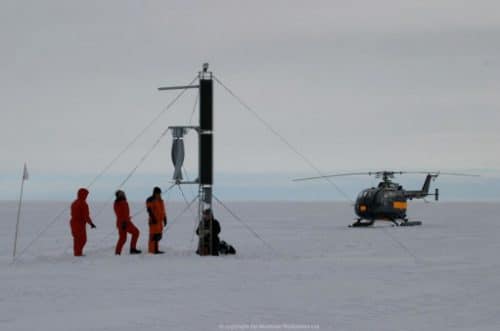
The Windside wind turbines are designed for harsh conditions and are ice resistant. These features were a priority when the research station was choosing equipment in the extreme weather conditions of the Antarctica. It was crucial to time the assembling work of the wind turbines just right. In the Antarctica the winter storms are so severe that working outside the research station can be seriously dangerous. When the weather is in its most uncompromising phase, no one can survive outside for more than a few minutes without injuries. Luckily, weather conditions were very favorable this time and everything went according to the plan.
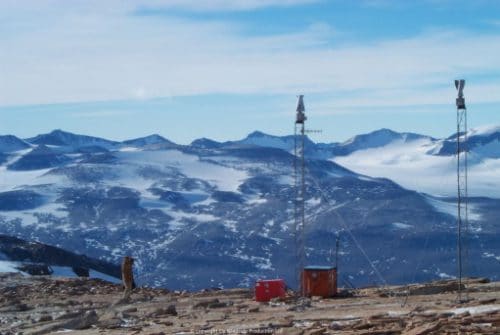
Unfortunately for Risto the locals -the penguin population- had already started their migration to the other side of the continent. The other birds, called skua on the other hand came close. And a bit too close to the minds of technicians, who agree with Hugh Powell (2018) on that, skuas are like seagulls but without the social grace and with more attitude! You can imagine climbing on poles in the freezing winds to assemble turbines that weigh hundreds of kilos, and being attacked by a giant sea gull’s flapping wings and nosy peaks!
Risto also had a chance to visit another research station at McMurdo where Windside wind turbines have been swirling up electricity for the station’s energy needs for nearly 20 years. McMurdo’s wind turbines were the first ones Windside delivered to the Antarctica and they are still working, producing grid free energy at the station.
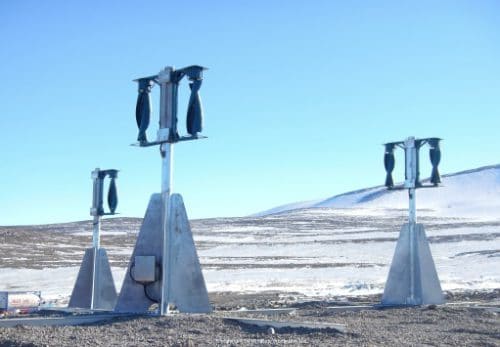
The trip back was a little easier to Risto but still thrilling. He left Antarctica on an army plane: Boeing 747, which took off on the runway made of ice. The runway is known to be one of the most dangerous ones on earth. Five days later, he returned home safely.
Since this amazing trip, Windside has delivered several wind turbines to various research stations in Antarctica. Today turbines are delivered to the South Pole on a yearly basis to produce clean, grid free energy and enabling significant research by international groups of scientists, who live on this exceptional and harsh continent.
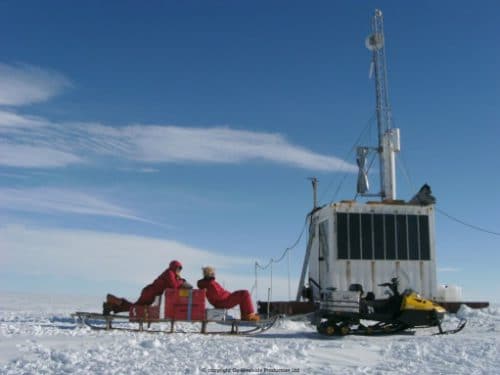
The article was first published in Finnish in the Tuulivoima-magazine 2016 http://www.tuulivoimalehti.fi/aiheet/pientuulivoima/matkakertomuksia-pingviinimantereelta.html
references:
Campbell, Victoria. “Photo Essay: South Polar Skua, the Antarctic Survivor.” , All About Birds, Cornell Lab of Ornithology, 17 Jan. 2018, www.allaboutbirds.org/photo-essay-south-polar-skua-the-antarctic-survivor/.

